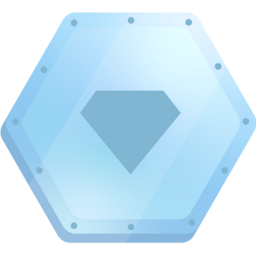Zamora Daniela
メンバー加入日: 2024
ダイヤモンド リーグ
22305 ポイント
メンバー加入日: 2024

This course introduces the products and solutions to solve NLP problems on Google Cloud. Additionally, it explores the processes, techniques, and tools to develop an NLP project with neural networks by using Vertex AI and TensorFlow.
このコースでは、Google Cloud 上で本番環境の ML システムをデプロイ、評価、モニタリング、運用するための MLOps ツールとベスト プラクティスについて説明します。MLOps は、本番環境 ML システムのデプロイ、テスト、モニタリング、自動化に重点を置いた規範です。 受講者は、SDK レイヤで Vertex AI Feature Store のストリーミング取り込みを使用する実践的な演習を受けられます。
このコースでは、Google Cloud 上で本番環境の ML システムをデプロイ、評価、モニタリング、運用するための MLOps ツールとベスト プラクティスについて説明します。MLOps は、本番環境 ML システムのデプロイ、テスト、モニタリング、自動化に重点を置いた規範です。機械学習エンジニアリングの担当者は、ツールを活用して、デプロイしたモデルの継続的な改善と評価を行います。また、データ サイエンティストと協力して、あるいは自らがデータ サイエンティストとして、最も効果的なモデルを迅速かつ正確にデプロイできるようモデルを開発します。
This course describes different types of computer vision use cases and then highlights different machine learning strategies for solving these use cases. The strategies vary from experimenting with pre-built ML models through pre-built ML APIs and AutoML Vision to building custom image classifiers using linear models, deep neural network (DNN) models or convolutional neural network (CNN) models. The course shows how to improve a model's accuracy with augmentation, feature extraction, and fine-tuning hyperparameters while trying to avoid overfitting the data. The course also looks at practical issues that arise, for example, when one doesn't have enough data and how to incorporate the latest research findings into different models. Learners will get hands-on practice building and optimizing their own image classification models on a variety of public datasets in the labs they will work on.
このコースでは、本番環境で高パフォーマンスな ML システムを構築するためのコンポーネントとベスト プラクティスについて学習します。また、ML システムを構築するうえで最も一般的な考慮事項を紹介します。これには、静的トレーニング、動的トレーニング、静的な推論、動的な推論、分散型 TensorFlow、TPU などが含まれます。このコースでは、優れた予測能力にとどまらない、優れた ML システムの特性を探索することに焦点を当てています。
Welcome to "CCAI Conversational Design Fundamentals", the first course in the "Customer Experiences with Contact Center AI" series. In this course, learn how to design customer conversational solutions using Contact Center Artificial Intelligence (CCAI). You will be introduced to CCAI and its three pillars (Dialogflow, Agent Assist, and Insights), and the concepts behind conversational experiences and how the study of them influences the design of your virtual agent. After taking this course you will be prepared to take your virtual agent design to the next level of intelligent conversation.
このコースには、ML ワークフローに対する実践的なアプローチが含まれています。ML チームが直面しているいくつかの ML ビジネス要件とユースケースに関するケーススタディの方法を紹介します。ML チームは、データの管理とガバナンスに必要なツールを理解し、Dataflow と Dataprep の概要を提供することから前処理タスクに BigQuery を使用することまで、データの前処理に最適なアプローチを検討する必要があります。 チームには、2 つの具体的なユースケースに対して機械学習モデルを構築するための 3 つのオプションが提示されます。このコースでは、チームが目的を達成するために、AutoML、BigQuery ML、またはカスタム トレーニングを使用する理由を説明します。さらに、カスタム トレーニングについても深く掘り下げます。コード構造のトレーニング、ストレージ、大規模なデータセットの読み込みからトレーニング済みモデルのエクスポートまで、カスタム トレーニングの要件について説明します。 Docker の知識がほとんどなくてもコンテナ イメージを構築できる、カスタム トレーニングの機械学習モデルを構築します。 ケーススタディ チームは、Vertex Vizier を使用したハイパーパラメータの調整と、これを使用してモデルのパフォーマンスを改善する方法を検証します。モデル改善についての理解を深めるために、理論についても詳しく考察します。正則化、スパース性の扱いなど、数多くある重要なコンセプトと原則について説明します。最後に、予測とモデル モニタリングの概要と、ML モデルを管理するための Vertex AI の活用方法について説明します。
Vertex AI Feature Store について学びたいとお考えですか? ML モデルの精度を向上させる方法や、最も有効な特徴を抽出するためのデータ列の見極め方を知りたいとお考えですか?このコースでは、良い特徴と悪い特徴について説明し、それらをモデルで最大限に活用できるように前処理して変換する方法を解説します。また、BigQuery ML、Keras、TensorFlow を使用した特徴量エンジニアリングに関するコンテンツとラボも含まれています。
このコースでは、TensorFlow 2.x 入力データ パイプラインの設計と構築、TensorFlow 2.x と Keras を使用した ML モデルの構築、ML モデルの精度の改善、スケーリングに対応した ML モデルの作成、特殊な ML モデルの作成について説明します。
まず、データ品質を向上させる方法や探索的データ分析を実行する方法など、データについての議論から始めます。Vertex AI AutoML についてと、コードを 1 行も記述せずに ML モデルを構築、トレーニング、デプロイする方法を説明します。BigQuery ML のメリットを理解していただけます。その後、機械学習(ML)モデルを最適化する方法、一般化とサンプリングを活用してカスタム トレーニング向けの ML モデルの品質を評価する方法を説明します。